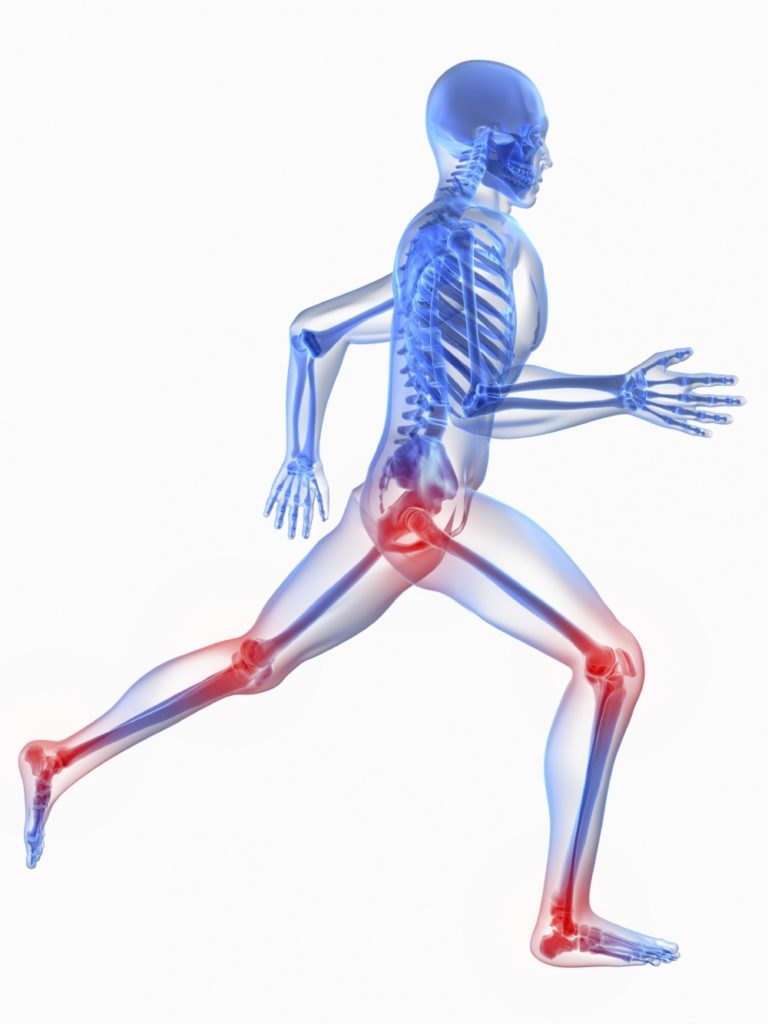Sports Injuries
10 Common Running Injuries: Prevention and Treatment
Running injuries usually happen when you push yourself too hard. The way your body moves also plays a role.
You can prevent many of them. Here’s how.
1. Runner’s knee. This is a common overuse injury. Runner’s knee has several different causes. It often happens when your kneecap is out of alignment.
Over time, the cartilage on your kneecap can wear down. When that happens, you may feel pain around the kneecap, particularly when:
- Going up or down stairs
- Squatting
- Sitting with the knee bent for a long time
2. Stress fracture. This is a small crack in a bone that causes pain and discomfort. It typically affects runners in the shin and feet. It’s often due to working too hard before your body gets used to a new activity.
Pain gets worse with activity and improves with rest. Rest is important, as continued stress on the bone can lead to more serious injury.
3. Shin splint. This is pain that happens in the front or inside of the lower leg along the shin bone (tibia). Shin splints are common after changing your workout, such as running longer distances or increasing the number of days you run, too quickly.
People with flat feet are more likely to develop shin splints.
Treatment includes:
- Rest
- Stretching exercises
- Slow return to activity after several weeks of healing
4. Achilles tendinitis. This is inflammation of the Achilles tendon. That’s the large tendon that attaches the calf to the back of the heel.
Achilles tendinitis causes pain and stiffness in the area of the tendon, especially in the morning and with activity. It is usually caused by repetitive stress to the tendon. Adding too much distance to your running routine can cause it. Tight calf muscles can also contribute.
Treatment includes:
- Rest
- Icing the area
- Calf stretches
5. Muscle pull. This is a small tear in your muscle, also called a muscle strain. It’s often caused by overstretching a muscle. If you pull a muscle, you may feel a popping sensation when the muscle tears.
Treatment includes RICE: rest, ice, compression, and elevation.
Muscle pull commonly affects these muscles:
- Hamstrings
- Quadriceps
- Calf
- Groin
6. Ankle sprain. This is the accidental stretching or tearing of ligaments surrounding the ankle. It often happens when the foot twists or rolls inward.
Sprains typically get better with rest, ice, compression, and elevating the foot.
7. Plantar fasciitis. An inflammation of the plantar fascia. That’s the thick band of tissue in the bottom of the foot that extends from the heel to the toes.
People with tight calf muscles and a high arch are more prone to plantar fasciitis. Although it may be linked to adding activity, plantar fasciitis can also happen without any obvious reason.
Treatment includes:
- Calf stretches
- Rest
- Icing the bottom of the foot
8. IT (iliotibial) band syndrome. This syndrome causes pain on the outside of the knee. The IT band is a ligament that runs along the outside of the thigh, from the top of the hip to the outside of the knee.
IT band syndrome happens when this ligament thickens and rubs the knee bone, causing inflammation.
Treatment includes:
- Cutting back on exercise
- Heat and stretching before exercise
- Icing the area after activity
9. Blisters. These are fluid-filled sacks on the surface of the skin. They are caused by friction between your shoes/socks and skin.
To help prevent blisters:
- Start using new shoes gradually
- Wear socks with a double layer
- Apply petroleum jelly on areas prone to blisters
10. Temperature-related injuries. These include:
- Sunburn
- Heat exhaustion
- Frostbite
- Hypothermia
You can prevent these by dressing appropriately, staying hydrated, and using sunscreen.
Tips to Prevent Running Injuries
By taking a few precautions and planning, you can prevent many common running injuries. Here are some tips for preventing injuries.
Listen to your body: Don’t ignore pain. A little soreness is OK. But if you notice consistent pain in a muscle or joint that doesn’t get better with rest, see your health care provider.
Create a running plan: Before beginning a running routine, talk to a trainer. A trainer can help you create a running plan that is in line with your current fitness abilities and long-term goals.
Warm-up and stretch: Many injuries occur as a result of inadequate stretching. Before and after you run, stretch your muscles thoroughly — especially your calf, hamstrings, groin, and quadriceps.
Also, warm up for five minutes — by walking, for example — before you start stretching. Stretching cold muscles may cause injuries.
Strength train: Add weight training and ab exercises to your routine. This strengthens muscles and develops core strength.
Cross train: Mix up your fitness routine. Don’t only run. Try swimming, biking, tennis, or some other activity. This helps prevent overuse injuries that more commonly occur when you do the same type of exercise over and over again.
Dress appropriately: Wear lightweight, breathable clothing that wicks moisture away from your skin. Dress in layers. Also wear a hat to protect against the sun and cold.
Be shoe smart: Wear proper-fitting socks and shoes with good support. If the soles of your running shoes have worn thin or are angled, it’s time to get a new pair. If you have foot problems, such as flat feet or high arches, consider using orthotic shoe inserts.
Run wisely: Run on a flat, smooth surface and avoid steep hills until your body gets used to the activity.
Be safe: Run during the day, in well-lit areas, or use a light so that you can be seen. Keep a cell phone and identification on you. If running with headphones, set the volume low enough so that you can hear cars and other noises. Run with a partner when you can.
Weather matters: Monitor the weather conditions before you go for a run. Don’t run outside if it is over 90 degrees Fahrenheit, below freezing, or the humidity is high.
Stay hydrated: Make sure you drink an extra 1 1/2 to 2 1/2 cups of water on the days you run. If you are running for more than an hour, drink a sports drink to replenish electrolytes lost in sweat.
Treatment of Common Running Injuries
Most running injuries can be relieved by following these treatment strategies. If pain and discomfort continues, see your health care provider. You may need more advanced treatment to resolve your running injury.
Rest: Take it easy. If you keep running, your injury may get worse. Choose alternative ways to exercise while you heal, such as swimming or cycling.
Ice and cold therapy: Apply ice packs to reduce pain, inflammation, and swelling.
Compression: Wrap the affected area with tape and use splints and supports to control swelling and stabilize the affected area.
Elevate: If you sprain your ankle or hurt your foot, elevate it to reduce swelling.
Stretch: To reduce pain and tension of the affected area, gently stretch and massage the injured area.
Pain relievers: Take over-the-counter pain relievers, such as acetaminophen (Tylenol) or anti-inflammatory medications, such as ibuprofen (Advil, Motrin) and naproxen (Aleve), as recommended by your health care provider to relieve pain and inflammation.
Don’t try to push through pain. If you notice discomfort, take a break from running. If the pain continues, seek care from your health care provider.

